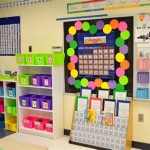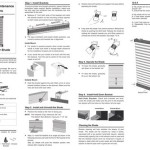Letter Decorative Designs: Exploring Styles and Applications
Letter decorative designs encompass a broad spectrum of artistic techniques applied to the representation of letters, transforming simple characters into visually engaging and aesthetically pleasing elements. These designs transcend mere legibility, focusing on embellishment, stylization, and integration with surrounding artwork. The applications of letter decorative designs are vast, ranging from traditional calligraphy to modern digital typography employed in branding, signage, and graphic design. This article will explore various styles of letter decoration, their significance, and their diverse applications.
The history of letter decorative designs is deeply intertwined with the evolution of writing itself. Early writing systems, often carved into stone or inscribed on clay tablets, already exhibited rudimentary forms of decoration. As writing materials and tools improved, the possibilities for embellishment expanded. Medieval illuminated manuscripts, for example, are renowned for their intricate borders, vibrant colors, and elaborate initial letters, showcasing exceptional artistry and craftsmanship. Renaissance letterforms, influenced by classical ideals, emphasized balance, proportion, and elegance. The advent of printing further revolutionized letter design, leading to the development of diverse typefaces and decorative embellishments that continue to influence contemporary design.
Calligraphy: The Art of Beautiful Writing
Calligraphy, derived from the Greek words for "beauty" and "writing," is arguably the most prominent and influential form of letter decorative design. It involves the skilled use of specialized pens, brushes, or other writing implements to create visually appealing letterforms. Calligraphic styles are numerous and diverse, each possessing unique characteristics and historical origins. Copperplate calligraphy, characterized by its elegant, flowing strokes and thick-thin contrast, was widely used for formal correspondence and engraving in the 18th and 19th centuries. Gothic calligraphy, also known as blackletter, is characterized by its dense, angular forms and ornate embellishments, prevalent in medieval manuscripts and printed books. Modern calligraphy encompasses a wide range of contemporary styles, often incorporating experimental techniques and materials. The fundamental principles of calligraphy, including letter construction, spacing, and rhythm, remain central to letter decorative designs across various disciplines. Mastering calligraphy requires extensive practice and a deep understanding of letterform anatomy and historical context.
The visual appeal of calligraphy stems from several factors. The controlled variation in stroke weight, achieved through careful manipulation of the writing tool, creates a dynamic visual texture. The consistent spacing between letters and words contributes to the overall rhythm and harmony of the composition. The use of flourishing, embellishments that extend beyond the basic letterforms, adds an element of elegance and visual interest. Calligraphy is not merely about writing; it is about creating art through the medium of letters. The calligrapher acts as both scribe and artist, imbuing each stroke with intention and personality.
Beyond its aesthetic value, calligraphy holds cultural and historical significance. In many cultures, calligraphy is considered a highly respected art form with deep roots in religious and philosophical traditions. Islamic calligraphy, for example, plays a central role in religious art and architecture, with intricate designs based on Arabic script adorning mosques and sacred texts. East Asian calligraphy, particularly in China, Japan, and Korea, is closely associated with philosophy, meditation, and personal expression. The calligraphic arts reflect the values and aesthetics of the cultures from which they originate.
Typography: The Art and Technique of Type
Typography is the art and technique of arranging type to make written language legible, readable, and appealing when displayed. While all typography involves the selection and arrangement of letters, decorative typography goes beyond functional communication to incorporate artistic elements and expressive styles. This can involve modifying existing typefaces, creating entirely new letterforms, or combining typography with illustrations and other graphic elements. Decorative typography is commonly used in advertising, branding, and editorial design to create eye-catching headlines, logos, and visual identities.
The development of typography has been driven by technological advancements and evolving aesthetic preferences. The invention of movable type in the 15th century revolutionized the printing industry, leading to the development of standardized typefaces and increased accessibility to written information. Over the centuries, numerous type designers have created iconic typefaces that have shaped the history of visual communication. Garamond, Baskerville, and Helvetica are just a few examples of typefaces that continue to be widely used today. The advent of digital typography has further expanded the possibilities for letter design, allowing designers to create and manipulate typefaces with unprecedented flexibility.
Decorative typography often involves the use of unconventional letterforms, stylized serifs, and elaborate embellishments. Designers may distort, stretch, or rotate letters to create a sense of movement or visual impact. They may also incorporate textures, patterns, and color gradients to add depth and dimension to the typography. The goal of decorative typography is to capture the viewer's attention and communicate a specific message or feeling. For example, a playful typeface with rounded letterforms might be used in a children's book, while a bold, geometric typeface might be used in a corporate logo.
Illumination and Lettering Integration
Illumination, traditionally associated with medieval manuscripts, involves the embellishment of text with elaborate decorations, including borders, initial letters, and miniature illustrations. These decorations were often executed in gold and silver leaf, giving the manuscripts a luminous quality. While illumination is less common in contemporary design, its principles of integration and embellishment continue to influence letter decorative designs.
The integration of lettering with illustrations and other graphic elements is a key aspect of many letter decorative designs. This can involve incorporating letters into illustrations, creating letterforms that mimic natural shapes, or using typography as a structural element in a composition. The goal is to create a harmonious and visually engaging relationship between the letters and the surrounding artwork. This integration can be seen in various contexts, from hand-painted signs to digital illustrations with typographic elements.
Lettering, closely related to calligraphy, refers to the art of drawing letters rather than writing them. Lettering artists create custom letterforms for specific purposes, often working by hand to achieve unique and expressive styles. Unlike typography, which relies on pre-designed fonts, lettering allows for greater flexibility and control over the final appearance of the letters. Lettering is commonly used in logos, posters, and other graphic designs where a unique and personalized touch is desired. The combination of lettering and illustration creates powerful visuals, blending the precision of letterforms with the expressive freedom of artistic drawings. This fusion allows for unique storytelling and brand representation that extends beyond conventional design.
The principles of visual hierarchy also play a crucial role in combined letter and illustration designs. The size, placement, and style of the lettering should be carefully considered in relation to the illustration to ensure that the message is clear and easily understood. The use of color, contrast, and negative space can also be used to create visual interest and guide the viewer's eye. Successful integration requires a thoughtful understanding of both typographic and illustrative principles.
The application of letter decorative designs extends far beyond traditional forms of art and craft. In the digital realm, these elements are vital for creating intuitive user interfaces, compelling websites, and engaging marketing materials. The rise of social media has further amplified the importance of visual communication, making letter-based designs essential for capturing attention in a crowded online environment. Whether it is an elaborately calligraphed invitation or a carefully crafted logo, the power of aesthetically designed letters lies in their ability to communicate, inspire, and connect with audiences on a personal level.

Decorative Letter A Clipart Etc Letters Fancy Art

L Decorative Letter Postcard Zazzle Hand Lettering Art Letters

Decorative Alphabets Typography Alphabet Lettering

3d Decorated Letters Decorative Letter Paper Cardstock Diy

Decorative Alphabets Letters Font Text Typography Png Pngegg

Premium Vector A Letter Monogram Design Feminine Alphabet Cute Floral Decorative Font

Decorative Letters Designs Themes Templates And Able Graphic Elements On Dribbble

Vintage Jewel Tone Letters Abc 6 8 10 Inch Alphabet Design Creative Lettering

Monogram Wall Art Custom Lettering Stencils From Modello Designs

Decorative Letter M Clipart Etc Letters Fancy Lettering Alphabet
Related Posts







